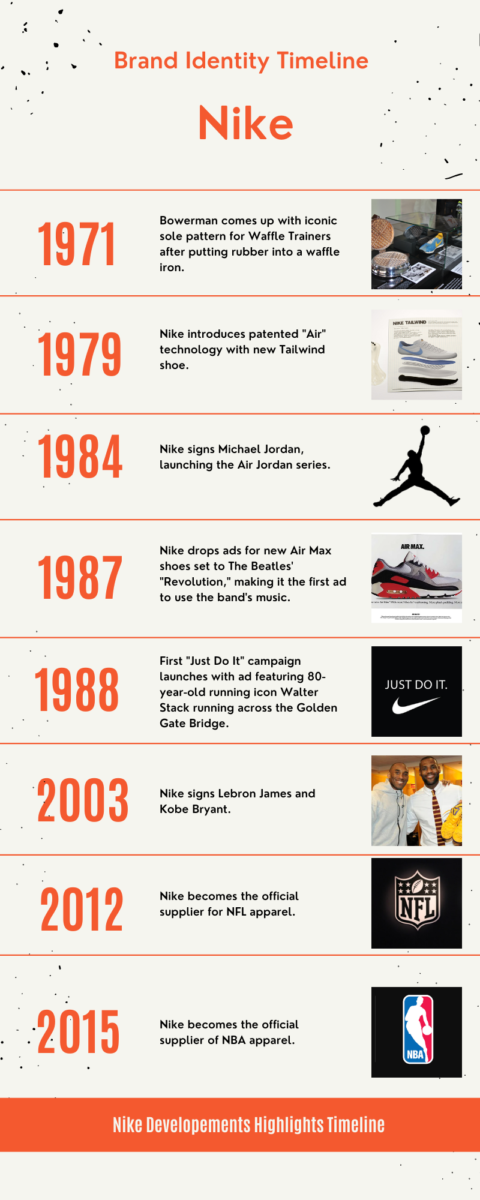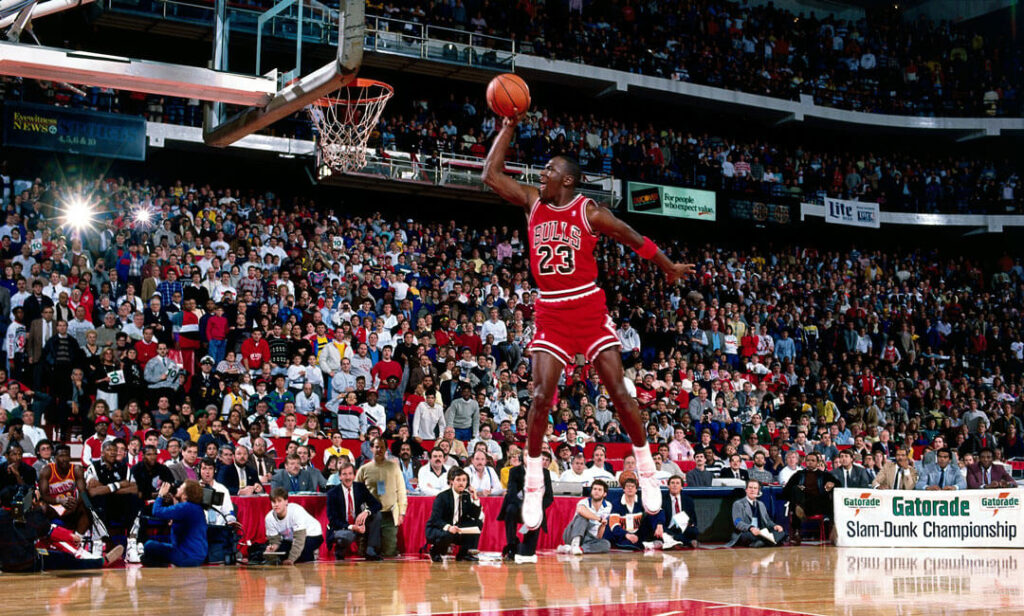Nike’s path of origin
Nike, the world’s largest athletic apparel company, is best known for its footwear, apparel, and equipment. Founded in 1964 as Blue Ribbon Sports, the company became Nike in 1971 after the Greek goddess of victory. Nike exists to bring inspiration and innovation to every athlete in the world.

The history of a company is closely related to its founder. In 1972, Bill Bowerman was a track and field coach at the University of Oregon, and as a coach, he was very attentive to his athletes and their athletic needs. He was more than a coach, he was a teacher. Bowerman, who was also an innovator, brought back to the United States a new concept of running and fitness during his inspiring trip to New Zealand in 1962. At the same time, he quickly revolutionized American sports. He brought a new approach to training that completely transformed the way athletes trained. The spirit of loyalty, competition, and teamwork that Bowerman instilled in his athletes, little by little, gradually built the foundation of today’s Nike collaborative culture.
As a coach, Bowerman was committed to constantly making his athletes perform better, so he designed athletic shoes for athletes that were less prone to injury and allowed them to perform better, and his shoes were lighter and more comfortable than the other athletic shoes of the time. He tried out a variety of materials and let his athletes try them out.

Another founder of Nike, Phil Knight, was an excellent middle-distance runner. He was coached by Bill Bowerman at the University of Oregon, and Bowerman was always there to motivate and encourage him as a coach. During practice, Phil Knight often complained to his coach, Bowerman, that the United States had never produced a really good pair of athletic shoes.
In 1964, Phil Knight and his coach Bill Bowerman each contributed $500 to an agreement to form a company and pledge to provide the most professional and better athletic shoes for athletes. The new company was Blue Ribbon Sports, which later changed its name to Nike.
Nike Logo
The Nike logo is so well-known across the globe, that it is easy to assume it cost thousands of dollars and required an entire design team. The amazing truth is graphic student Carolyn Davidson only received an initial $35 for creating one of the world’s best-known logos. In Greek mythology, Nike is the Winged Goddess of Victory. The logo is derived from the goddess’ wing,’ swoosh’, which symbolizes the sound of speed, movement, power, and motivation.

Nike Timeline HighLights
In the early 70s, Knight began to implement the idea of self-designed shoes, while after careful research, found that the market demand has been enough to support him to establish their own production line. However, finally decided to use the Japanese production experience first, in 1972 Knight signed the first contract with the Japanese side, the official production of completely American design Nike sports shoes.
In the early 80s, Nike made a big profit and continued to play the role of a professional manufacturer of American sports shoes, but did not have any of its own production plants in the United States. Soon, the number one competitor, Reebok, called the battle against Nike. Reebok was a major player, successfully sweeping parts of the market with its innovative and powerfully designed athletic shoes. By the mid-1980s, Reebok was able to compete with Nike in a highly competitive market, and in 1987, Reebok took it to the next level, with sales of $991 million and a 30% share of the sports shoe market, with Nike coming in second with $597 million and an 18% share. In order to counter the provocation of Reebok, Nike was determined to bet a huge amount of money on the development and design of new products. It was not until the early 90s that Nike air shoes were officially launched, and gained unprecedented success. Therefore, the 80s are the years that Nike faced difficulties and tried to revive itself. There is no doubt that they did it. During this period, Nike suffered a strong competitive blow in the market, but it also establishes the main tone of the strategy for future new product development and design for Nike.

Nike climbed to its peak in the ’90s; Nike air shoes hit the market with a fanfare that no one could stop. At that time almost everyone had heard of Nike air shoes, and when you think of sneakers you think of Nike and think of Nike air. It was also at this time that Nike made one of the smartest moves, the company has spent millions of dollars to hire NBA superstar Michael Jordon as the spokesperson for its products and engage in various marketing and advertising activities. Also launching the Air Jordan series. With this action, Nike’s reputation spread to a new level.
The year 2000 was the time for Nike to welcome a new era. Nike is able to fully grasp the needs of young people for sports and casual shoes, understand their lifestyle and realistic psychological desires, develop creative new products, and promotional activities, standing at the head of creating consumer trends from beginning to end. Until now, Nike is still shining in his game. Nike and Air Jordan have an unshakeable place in the culture of sneakers. Especially now in the age of social media, Nike is keeping up with the times, whether online or offline, Nike has always maintained its popularity.
Resources for Research:
History of Nike: Timeline and Facts
https://www.thestreet.com/lifestyle/history-of-nike-15057083
Nike Sneaker Timeline 1964-2017
https://www.fatbuddhastore.com/nike-sneaker-history-i195
Nike Logo and Its History










